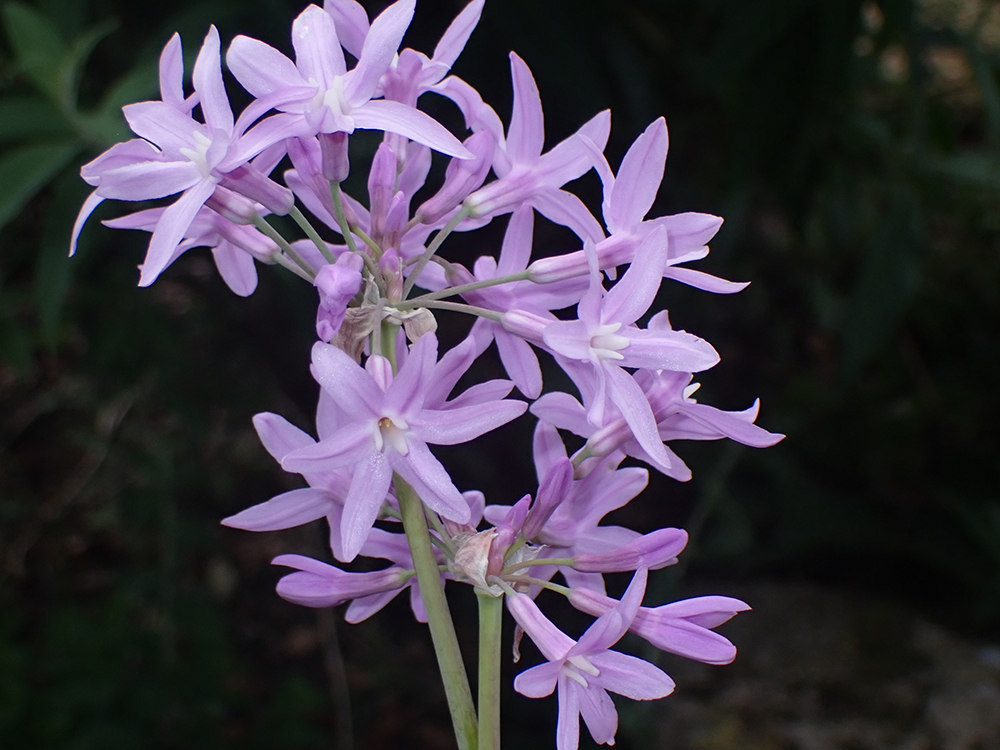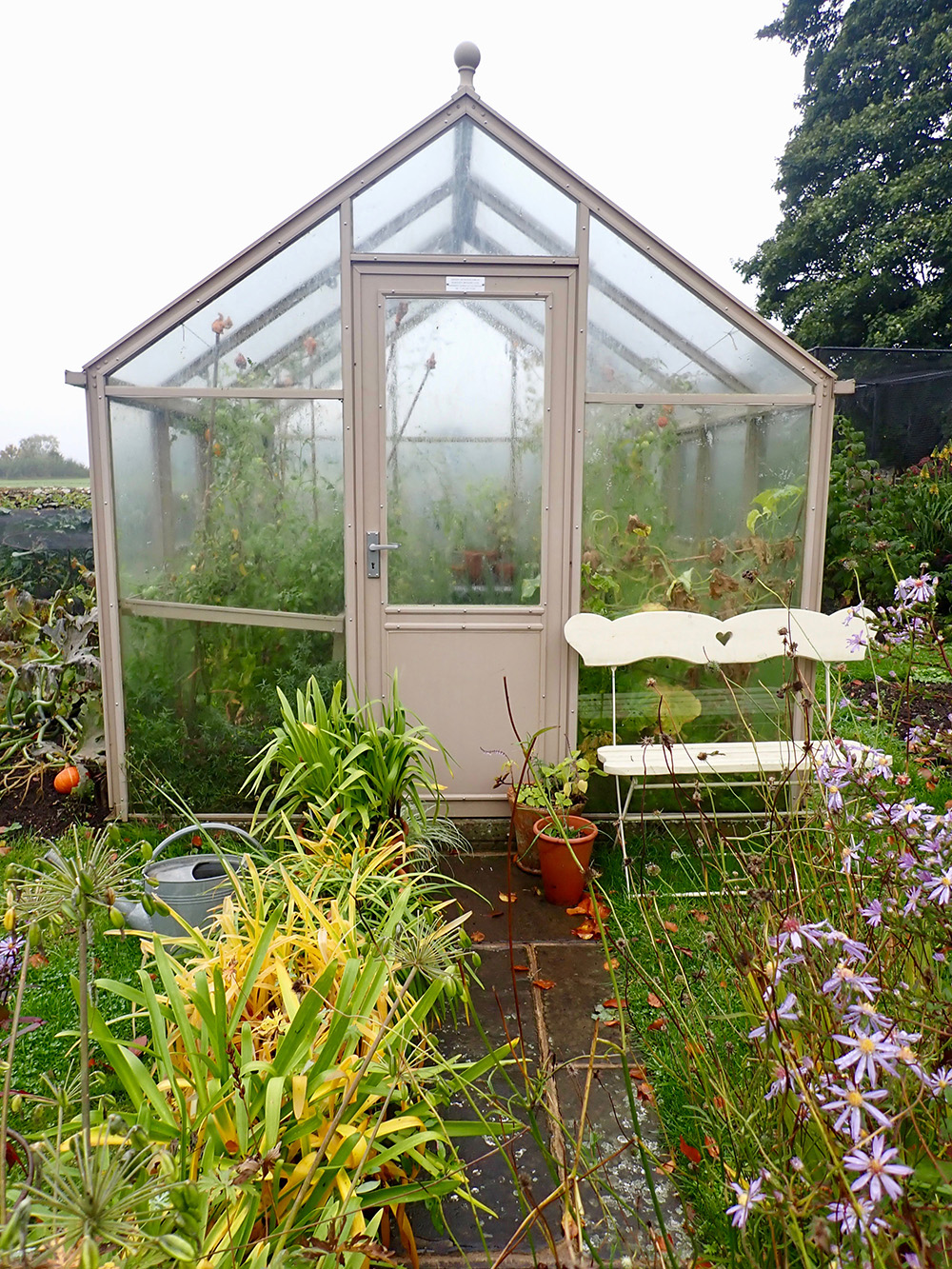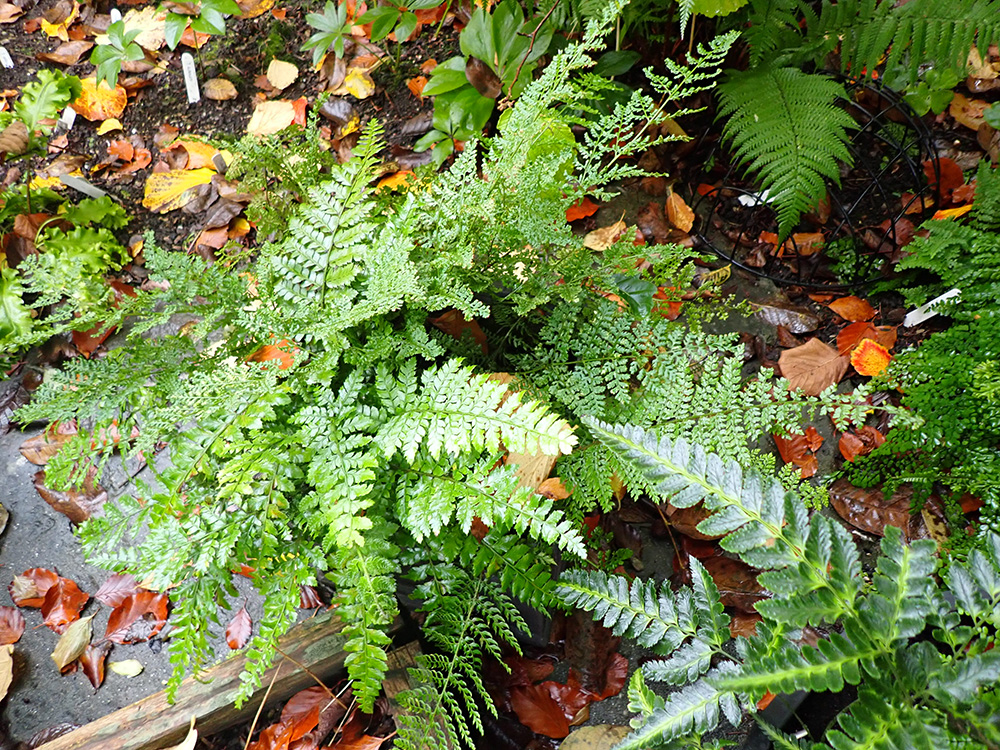Winter is knocking on the door once again and there’s lots to do in the garden in preparation. The trouble is you can never predict what winter will bring and I would like every gardener to be provided with their own personal crystal ball – particularly now that our climate’s so changeable. What will the next three months bring? Will it be wet and warm, or cold and dry? Gardeners prefer the latter by the way, because wet conditions kill more plants than cold temperatures – as you probably discovered last year.
I lost every monarda, lots of penstemons, all my agastaches along with lots of silver-leafed plants. All kaput! It was swings and roundabouts, which just about sums up the whole process of gardening – if you ask me. You win some and you lose some. My first flush of roses was amazing and my South African crocosmias and kniphofias loved all that rain and put on lots of leafy growth, although the dull summer didn’t encourage much flower – sadly. Many of my ferns were happy too.

With winter approaching we’re in the lap of the Gods once again, but greenhouse owners have one huge advantage. They can bring some of their plants under cover and keep them dry. My fourteen pots of agapanthus are lined up, outside the smaller unheated greenhouse, like soldiers on parade. They’re waiting for the tomatoes to be cleared away so they can go in instead. It keeps raining on them, but in the next couple of weeks they’ll be snug and dry. Mine get tucked under the greenhouse bench and it’s perfect for them. Tulbaghias also go in and my ‘John May’s Special’ produces mauve flowers for nine months of the year. Seek it out – it’s a lovely thing.
If you haven’t got a greenhouse, you can also lay your pots of agapanthus, or lilies, on their sides to stop rainfall from getting into the roots. Try to choose a position near the house, because that will be warmer. Then leave them to their own devices. Don’t water them. Cut them down, once the foliage fades, and then begin to water them again, in moderation, in February or March. Timing will depend on the weather. You need to feel some heat in the sun, before you start, and I am hoping for sun this year.

Succulents also get taken into the unheated greenhouse and they have a bubble wrap blanket when it’s cold. Many of them are on the hardy side, as long as the roots are dry. They get checked pretty regularly because vine weevils love their fleshy stems and roots. I give them a sharp tug to make sure they still have roots. Then they’re tipped out in early spring and early summer in case there are any white grubs. Adult vine weevils are active in winter. Succulents can be raised from single leaves if the roots disappear. Plunge the bases of the leaves into gritty sand. It does mean going back down the ladder though, to smaller plants.
The larger greenhouse, my Hartley Wisley Grow and Store, has a frost-breaking heater which helps to circulate the air and keep the temperature above freezing. In really severe weather, sheets of bubble wrap help to protect my plants and sometimes I use a double layer. Thick horticultural fleece also works. They both trap warm air underneath, the plant equivalent of thermal underwear. Bubble wrap is also useful wrapped round slightly tender outdoor plants ,such as evergreen kniphofias or red hot pokers. My ‘Prince Igor’ and the October-flowering K. rooperi are both wrapped up for winter towards the end of November. Fleece is wound round first and then there’s a bubble wrap layer. Bamboo canes keep it all in place. It’s not pretty, but it works. Large rolls of bubble wrap are not expensive.
If you have something slightly tender in the garden such as a species gladioli, dieramas, alstroemerias or Melianthus major, you can improve their chances of survival with a top dressing of coarse grit. It will act as a warm mulch and help to percolate rain water. Penstemons should not be cut down until the spring, because the overhead stems offer protection. If you were to cut them down in autumn, these southern hemisphere plants are likely to send out new (and very tender) growth which would be zapped by winter. By next April they should have plenty of new growth at the base. That’s the time to remove the old stems. They root easily from cuttings.

I can’t take everything into my greenhouses. I have large barrels containing ferns and bulbs and these have to stay in place. Make sure that you elevate larger pots and place them on pot feet, so excess water can escape. It will keep the roots drier. Bricks will also work although, just like bubble wrap, they’re not pretty. You should be able to remove frost-protecting covers sometime in March. Again, it will depend on the weather.
I grow lots of pelargoniums in small terracotta pots in the summer, but I haven’t got room for them in my heated greenhouse over winter. In any case, I am always nervous about vine weevil. I prefer to take cuttings and ditch the original plant for that reason. Pelargoniums and plectranthus can be raised from semi-ripe cuttings and the easiest way is to fill small seed trays or pots with gritty horticultural sand. Fine sand will not work, it has to be gritty.
Look for new, healthy growth and remove any buds. Trim under the leaf joint or node, remove or trim any over large leaves and then plunge your cuttings of pelargoniums, salvias, penstemons or pinks etc, into the sand – submerging two thirds of the cuttings. Keep them cool and damp, but frost-free, and they will begin to root very slowly. They should be ready to pot up next spring.

My cuttings are kept warm in my large electric Vitopod propagator and they DO cost and average of £250.00 now. Mine has earnt its keep over the years, and more. I don’t have to buy pelargoniums or plectranthus, year after year, and I’m able to raise all my own vegetable plants from seeds, including tomatoes, peppers and aubergines. I can do cuttings of salvias, pinks and lots of other plants too. In very cold weather, I cover the propagator with fleece or bubble wrap. If you’re putting cuttings in a greenhouse, place them in the shadiest part because you want them kept cool. A warm day might dry them out if they’re in full sun, so check them regularly.
There are certain plants I prefer to keep in their pots, because the growth is woodier and this often makes them tricky to propagate. They include lemon verbena (Aloysia citrodora), fuchsias and heliotrope. These need to be kept a little damper and I suggest watering them a little every two to three weeks. If they dry out, they may die.
I also use my heated greenhouse to store my lifted dahlia tubers.
Wait for the first to blacken them and then lift them, keeping soil round the tubers. Place them in plastic bread trays and cover them with dry spent compost. Check through the tubers every now and then. Begin to water them again in March and then pot them up once they start into growth. If the tuber mass is very large break them into pieces, because over-large dahlias don’t produce much flower. I find myself short of space at this time of year, so the bread trays have to be stacked up. That doesn’t matter, because the dahlias have gone into dormancy. They are sleeping beauties. They’re waiting for next year – just like me!











